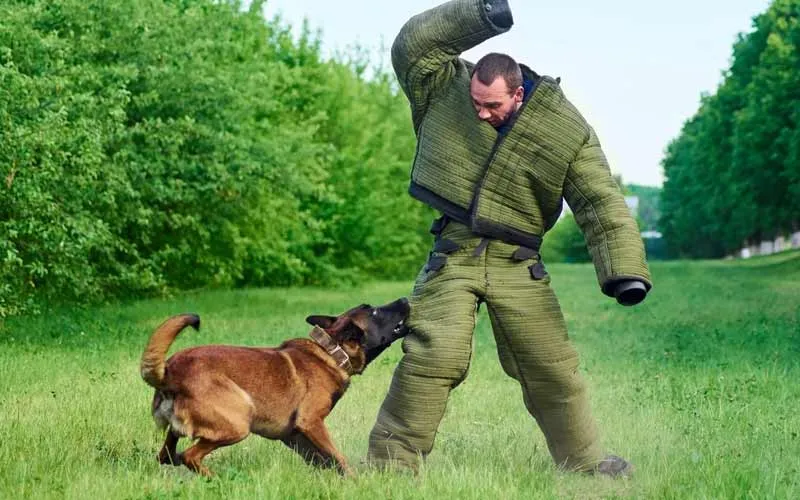Have you been looking for effective ways to train a dog not to bite? Here, you will get to know eight effective ways to train a dog not to bite.

Dogs bite for various reasons, including fear, anxiety, or a territorial instinct.
Recognizing the root cause is the first step in curbing this behavior.
One crucial aspect of responsible pet ownership is training your dog not to bite.
Understanding the reasons behind this behavior and employing effective techniques can create a harmonious relationship between you and your canine companion.
How to Train a Dog Not to Bite

Here are eight effective ways to train a dog not to bite:
1. Establish Clear Boundaries By Using Consistent Command Like ‘No Bite’
Training your dog not to bite begins early, ideally during puppyhood.
Establish clear boundaries by using consistent commands such as “no bite” or “gentle.”
Puppies explore the world with their mouths, so it’s crucial to teach them from the start what is acceptable behavior.
Consistency is key in setting the tone for proper engagement, and ensuring your dog understands the rules of interaction.
2. Apply Positive Reinforcement For Good Behaviors
Dogs respond positively to reinforcement, so utilize treats and affection to reward good behavior.
Whenever your dog exhibits gentle manners and refrains from biting, offer treats and praise.
In addition, this positive reinforcement creates an association between gentle behavior and delightful rewards, encouraging your dog to choose non-biting actions.
3. Engage in Interactive Play With the Dog
Interactive play is a vital component of training to prevent biting.
You can use toys and games to redirect your dog’s energy from biting to enjoyable, bite-free activities.
This not only provides an outlet for their natural instincts but also reinforces the idea that playtime is enjoyable without resorting to biting.
4. Socialize the Dog With People and in Different Environments
Expose your dog to different environments and situations for proper socialization. Gradual exposure reduces anxiety and fear-based biting.
When your dog is comfortable in various settings, they are less likely to resort to biting as a stress response.
In addition, socialization fosters confidence and a well-adjusted demeanor.
5. Teach the Dog ‘Leave It’ Command
Teaching the ‘leave it’ command is a powerful tool in preventing biting.
Also, this command empowers your dog to release whatever has caught their interest, preventing impulsive bites.
Consistent practice reinforces their ability to redirect attention and let go, promoting non-biting behavior.
6. Use Bitter-Tasting Sprays to Items the Dog Bite
Apply pet-safe, bitter-tasting sprays to items your dog may bite.
The unpleasant taste serves as a deterrent, teaching them to associate certain objects with an undesirable flavor.
Also, this method discourages biting and redirects their attention to more appropriate items.
7. Seek Professional Training
For personalized guidance and addressing specific behavioral issues, consider seeking the expertise of professional trainers.
Furthermore, professional training can provide tailored solutions, ensuring a lasting, bite-free transformation.
Trainers can identify unique challenges and implement effective strategies for your dog’s individual needs.
8. Monitor the Dog’s Health and Wellness
Regular veterinary check-ups are essential in monitoring your dog’s health and well-being. Sometimes, biting can be a result of underlying health issues causing pain or discomfort.
Also, identifying and addressing these issues promptly ensures that your dog’s behavior is not driven by physical discomfort.
In conclusion, training your dog not to bite is an investment in a lifelong, harmonious relationship.
By establishing clear boundaries, incorporating positive reinforcement, and addressing specific needs, you pave the way for a tail-wagging triumph of a bond with your four-legged friend.
Start implementing these techniques today, and watch as your dog transforms into a well-mannered, bite-free companion.
Related Searches:
